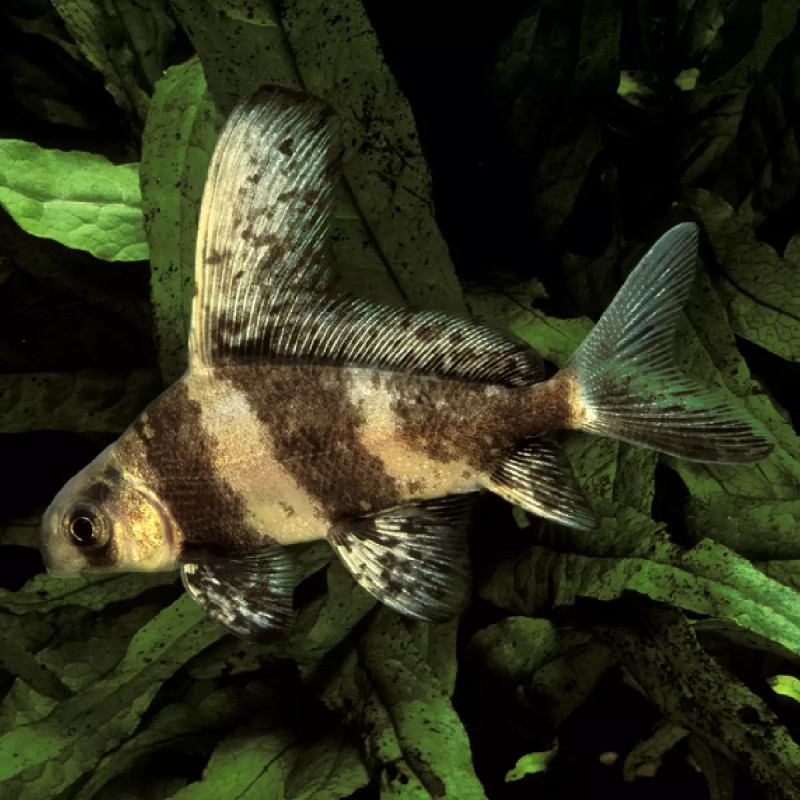More info
| Minimum Tank Size | 10000 litres / 2641.72 US gallons |
| Maximum Size | 90.0cm / 35.43inches |
| Temperature | 15°C / 59.00°F - 22°C / 71.60°F |
| Hardness | 2.02dgH / 36ppm - 20.00dgH / 357ppm |
| pH | 6.0-8.0 |
GENERAL DESCRIPTION
The Chinese Sailfin Sucker, scientifically known as Myxocyprinus asiaticus, is a monotypic genus within the Catostomidae family. Referred to by various names such as 'Chinese banded shark' and 'high-fin banded loach,' it is a bottom-dwelling fish native to the upper and middle sections of the Yangtze River system in China. This species, with a maximum size of 90.0cm, exhibits long pharyngeal bones with toothlike projections and notable protrusible, fleshy lips.
AQUARIUM SETUP
For maintaining Chinese Sailfin Suckers in captivity, a large tank of a minimum size of 10,000 litres is necessary. The tank should ideally mimic a flowing river environment with a substrate of rocks, gravel, boulders, and driftwood. Water quality, high dissolved oxygen levels, and consistent water movement are crucial for their well-being. Employing external filters and powerheads can help achieve these conditions. Detailed water parameters include a pH range of 6.0-8.0, water hardness of 36-357ppm, and a temperature range of 15-22°C.
BEHAVIOUR
Known for their non-aggressive nature, Chinese Sailfin Suckers can coexist with other large riverine species when housed in adequately sized aquariums. Observations in the wild suggest that they often form groups.
FEEDING AND DIET
As benthic omnivores, Chinese Sailfin Suckers feed on a diet consisting of insects, crustaceans, small molluscs, annelids, algae, and other vegetable matter in their natural habitat. In captivity, they should be offered daily meals of small live and frozen foods like bloodworms, Daphnia, and Artemia. Sinking dried foods rich in plant material such as Spirulina are also recommended.
REPRODUCTION & DIMORPHISM
Reproduction of Chinese Sailfin Suckers in aquarium settings remains unconfirmed, but young specimens available in the trade are artificially bred using hormones. In the wild, adults reach sexual maturity around 6 years of age and undertake annual migrations to spawn in shallow headwaters between February and April. Males exhibit intense red coloration when breeding, while females appear plainer. Sexual dimorphism becomes more apparent as fish mature.
HABITAT AND DISTRIBUTION
In their natural habitat, Chinese Sailfin Suckers are pelagic and predominantly occupy main river channels and large streams. Juveniles are typically found in slow-flowing, rocky shallow waters, while larger individuals prefer deeper areas. Endemic to the Yangtze River system in China, their distribution is threatened by factors like dam construction, pollution, overfishing, and the introduction of exotic species, particularly carp. The species is highlighted in the China Red Data Book of Endangered Animals as a 'second class state protected' animal, signifying its vulnerable status.
